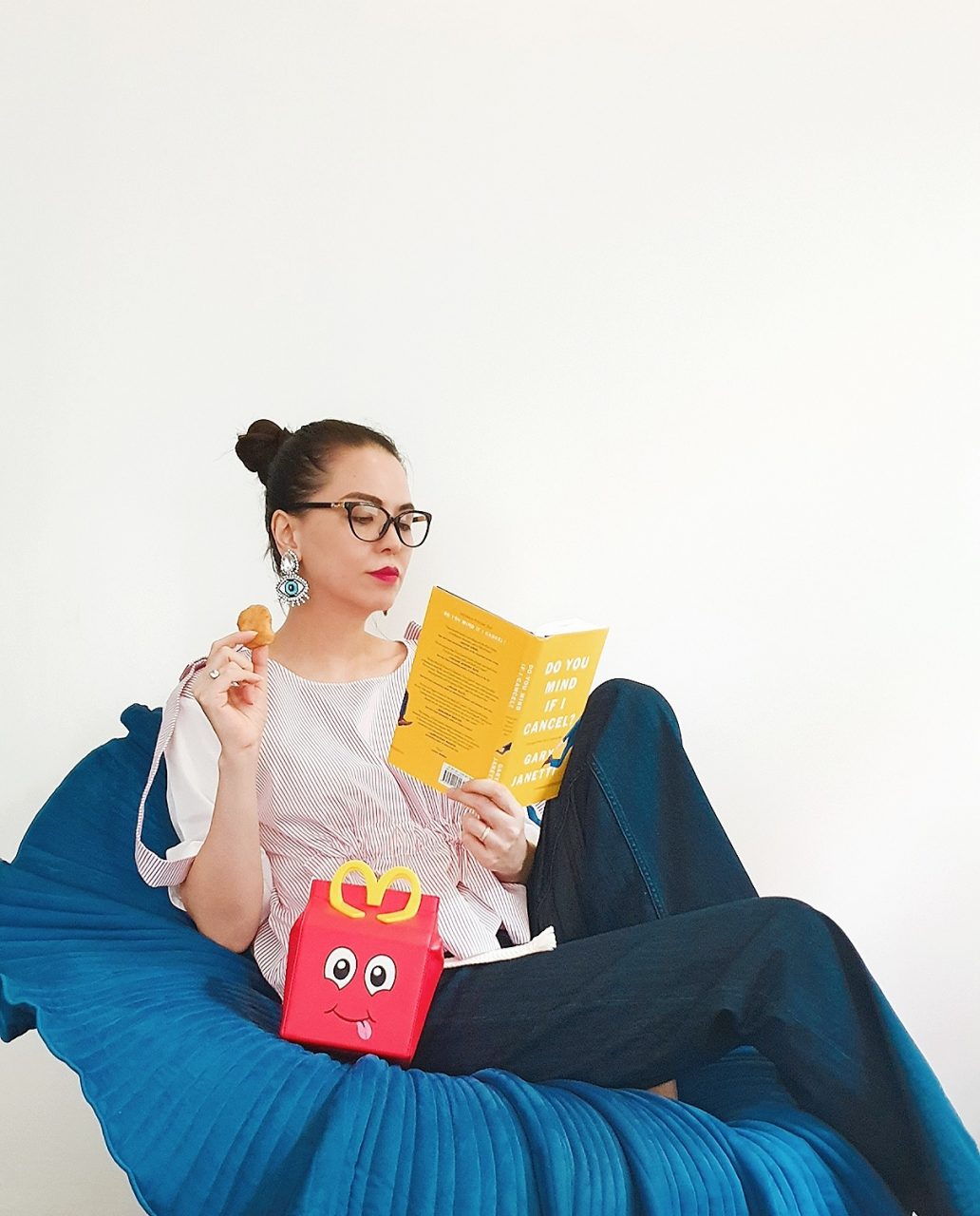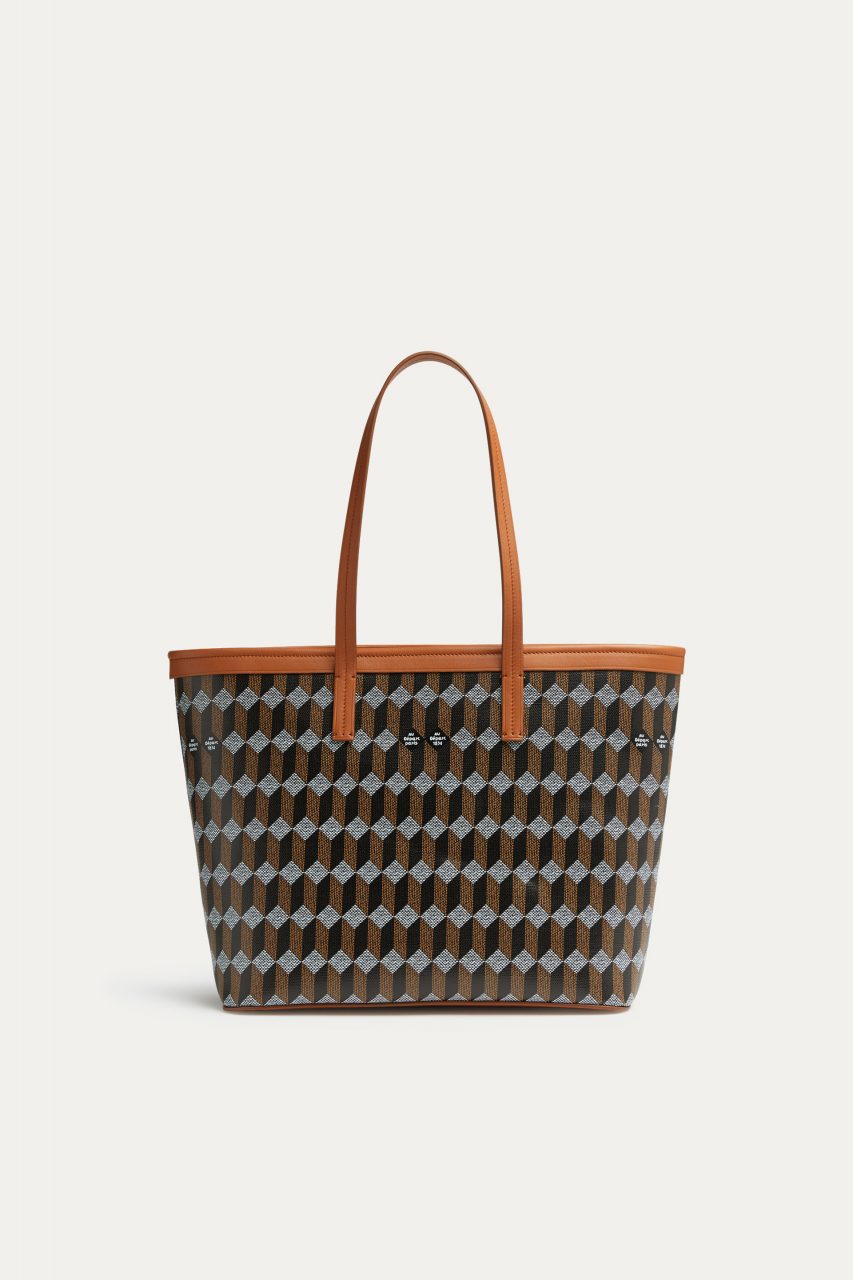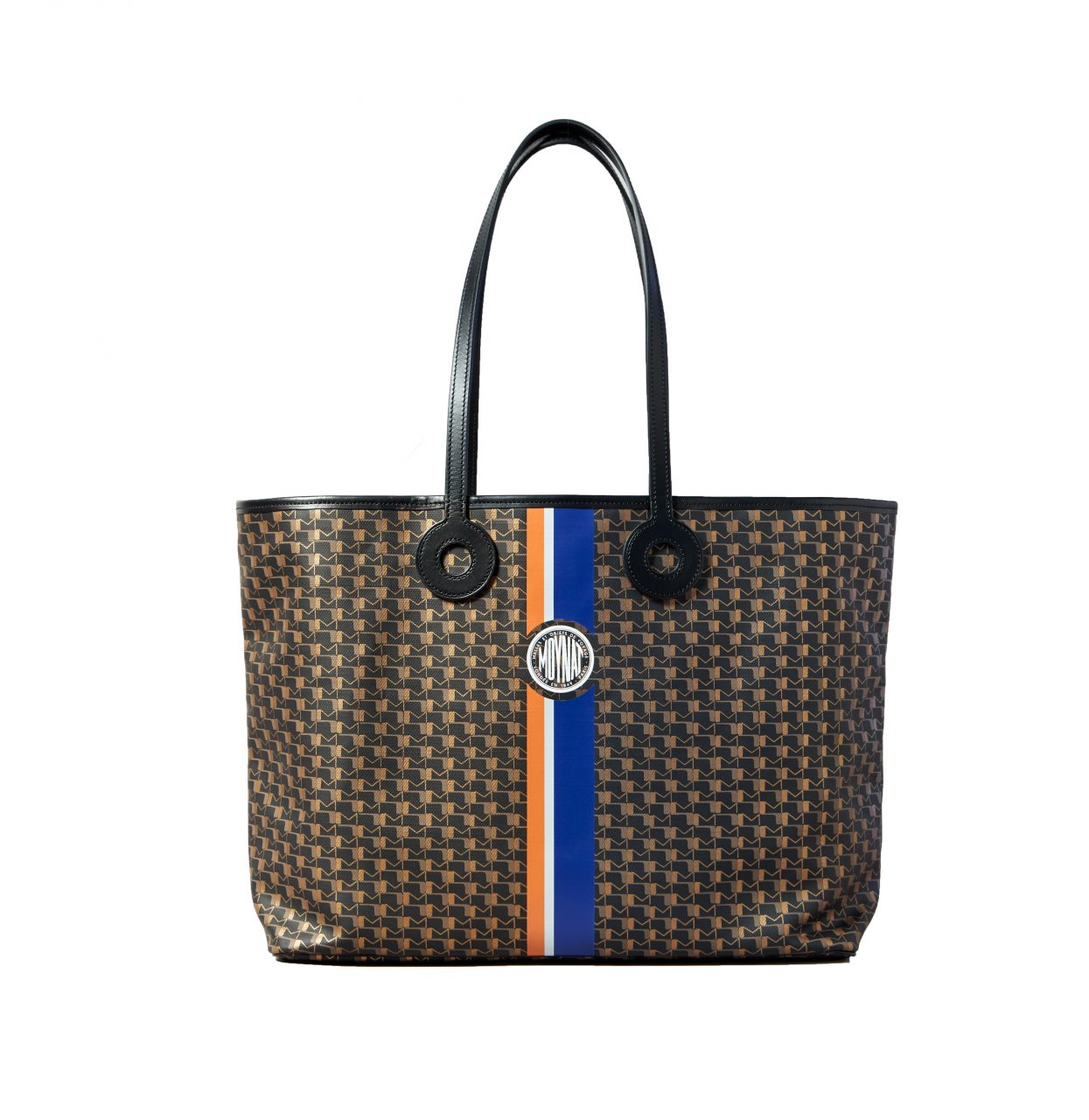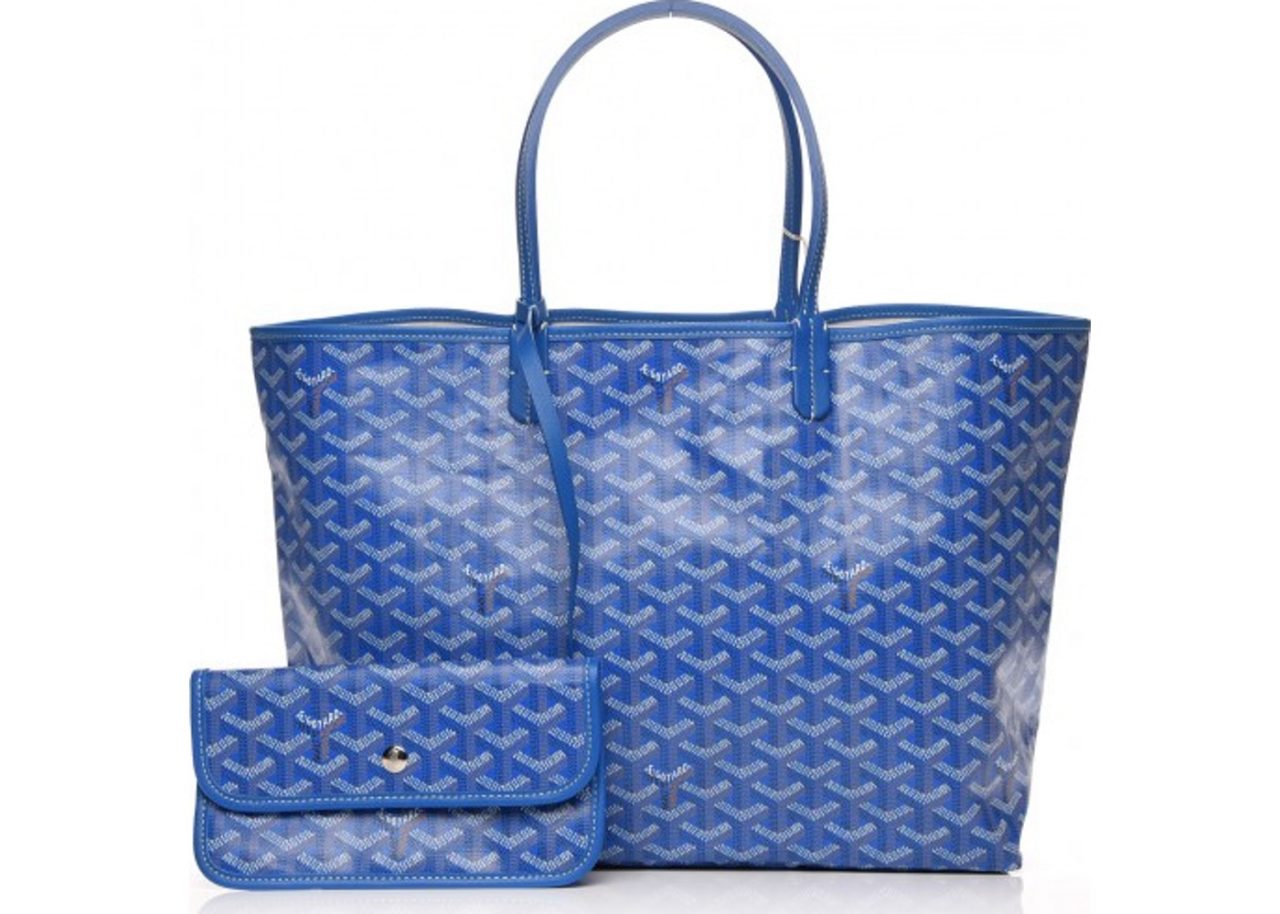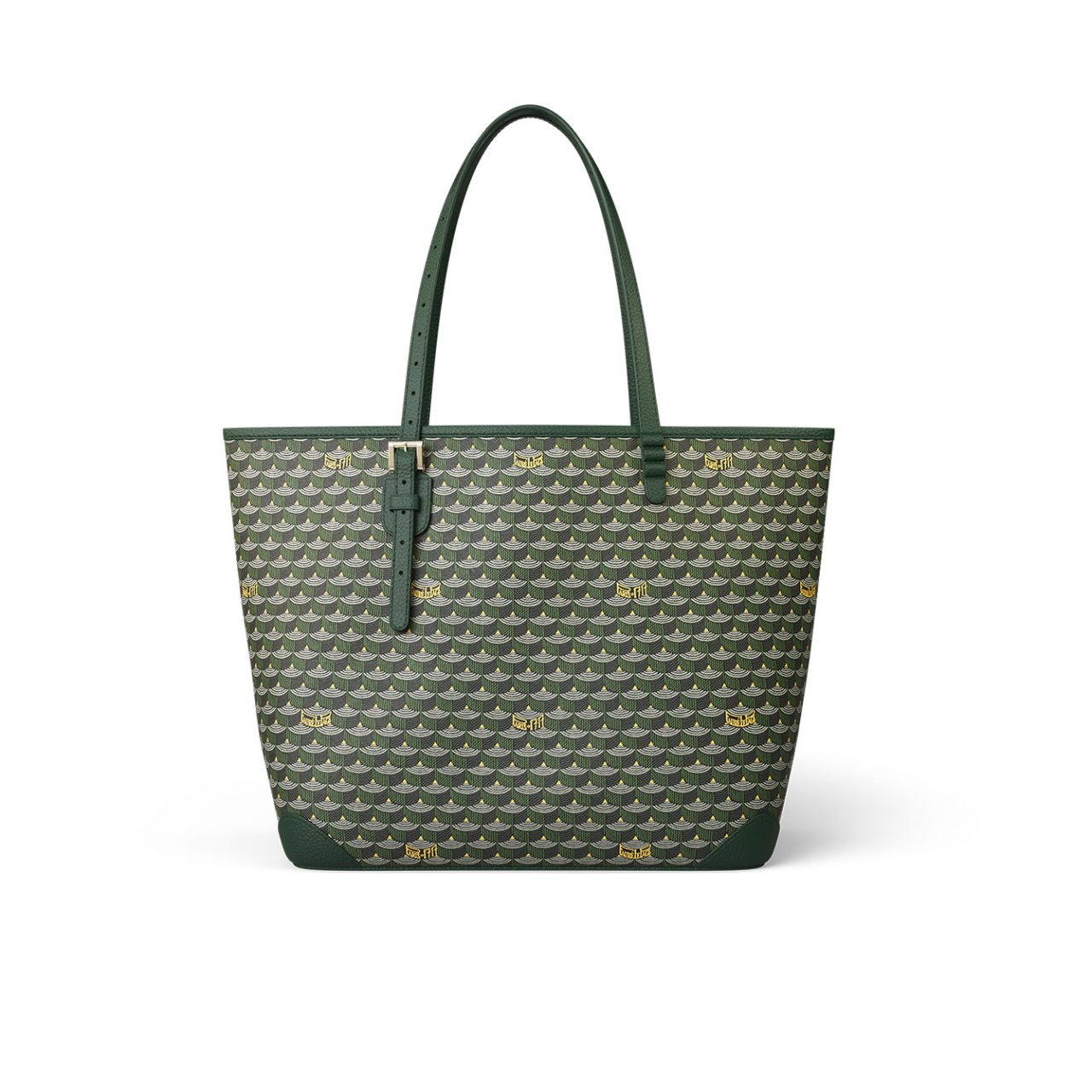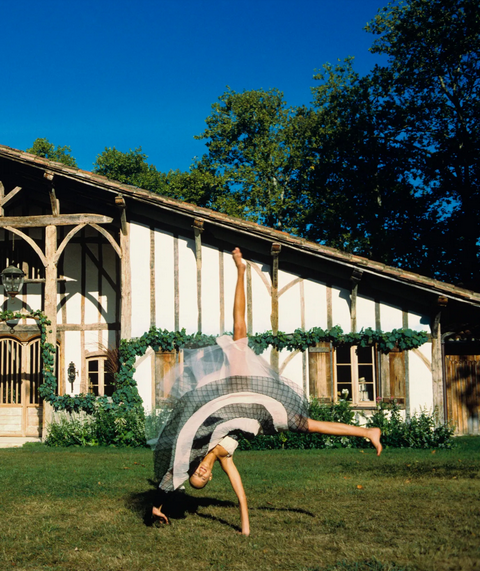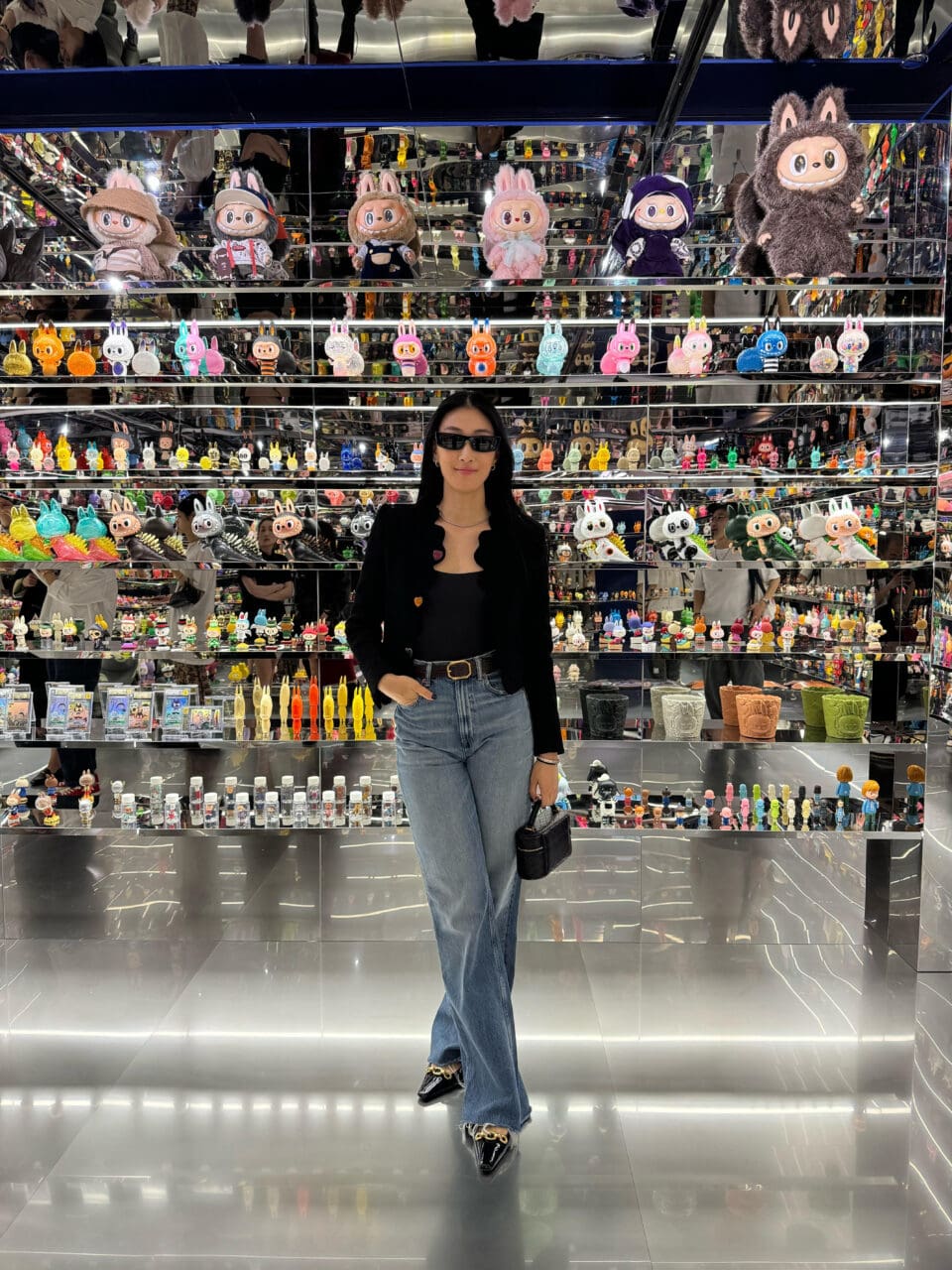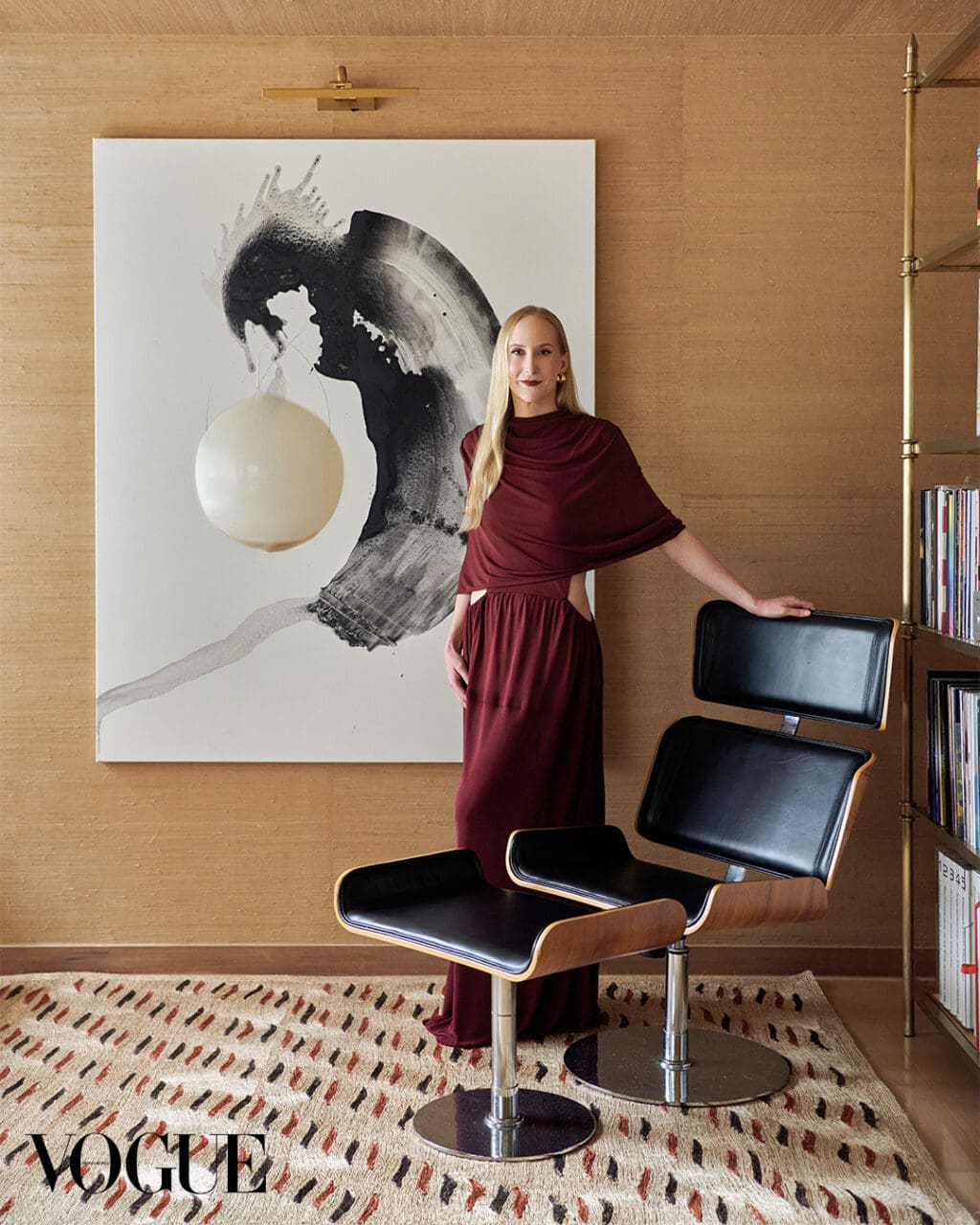Out of all of the bag styles available today, shopping totes or shopper bags are the most versatile. The tote is characterised by an open, usually unfastened, top for easy access, is spacious in size, and has parallel handles (either long or short) that run on each side of the bag’s body. From the office to a trip to the supermarket, to a weekend spent on the beach, the tote is without a doubt the most convenient all- around, hold-all day bag. And while totes come in different forms—from structured leather to softer fabric blends, the monogram canvas version is the classic and more affordable piece to own from designer labels.
In the late 18th century to the early 19th century, identifiable monograms were initially designed to serve as a counterfeiting deterrent by brands. Today, designer monograms are considered the maker’s mark, an instant brand identifier, and more often than not, a status symbol. Designer brands recognise that consumers “invest” in at least one monogram canvas tote, so this style is never absent from their year-round bag collection offerings. It must be noted though, that not all monogram canvas totes are created equal— beyond price, the quality of material, style, and craftsmanship differ from brand to brand. So, if you’re planning on investing in one, it’s helpful to know what you’re getting for the money you’re spending. Here are my top five choices.
Au Départ Roquette Horizontal Tote
Au Départ is not a newcomer in the leather goods industry. The company was founded in 1834 by brothers Ernest and Paul Bertin. Au Départ began trading in Paris during the dawn of railway travel via steam locomotive, selling luggage and travel goods. Au Depart had a short-lived partnership with Moynat in the late 1950s before operations ceased in 1976. The brand was recently resurrected in 2019 by a group of Asian investors, with former DSquared2 executive Gianfranco Maccarrone at the company’s helm as CEO. From Au Départ’s original box monogram that was created in the early 1900s, the collection now comes in two signature motifs—the classic coated cotton canvas patterned exactly after the original Au Départ fabric, and a modernised “Reflex” box monogram in iridescent silver jacquard on black which gives it a two-dimensional wave effect when it catches the light. The Roquette Horizontal Monogram Tote is designed as a more structured open tote, giving it added durability. It is paired with Hannover calfskin leather straps and comes in four combinations, in both classic and reflective cubic monogram motifs (reflective orange, reflective black, cognac, black). The tote currently comes in one size (40cm) but also has a smaller, vertical- orientated version (22cm) with a detachable shoulder strap.
Moynat Oh! Tote
Established in Paris in 1849 by Pauline Moynat with Octavie and François Coulembier (later acquired by Group Arnault in 2010), the maison’s graphic progression can be attributed to painter and illustrator Henry Rapin, Moynat’s artistic director from 1905 to 1930. Rapin created the signature motif by forming alternating lines in the letter “M.” Rapin’s creation has since become the house’s toile initiale. The original monogram was given a fresh, new look under current creative director Ramesh Nair, with a metallic bronze pigment used to highlight the letter “M.” The Oh! Tote was released Fall 2018 and is made from a durable and reinforced cotton canvas and linen blend. Nair collaborated with Franco- Japanese artist Tiffany Bouelle to create illustrated, limited edition pieces for the tote’s initial launch. Since then, the Oh! Tote, under the Canvas 1920 line, has become a mainstay in the monogram canvas collection of the brand. The Oh! Tote from the Canvas 1920 line features a tri- colored stripe with the Moynat macaron logo in the middle and comes in three colors—black (carbone), blue (indigo), and red (garance). It is currently available in two sizes—the MM (36cm) and the GM (43cm), though the tote also comes in a tall, portrait orientation with handles of 2 different lengths for carrying versatility.
Goyard Saint Louis
French leather goods manufacturer and trunk maker Goyard was established in 1853 by François Goyard. In 1892, Edmond Goyard created the Goyardine canvas – a natural coated cloth blend of cotton and linen with tree-like piled up “Y” dot patterns, the brand’s central initial that also pays homage to the family’s ancestry as log drivers. In 1998, Jean-Michel Signoles bought the brand, and in 2002 introduced 11 new shades aside from the maison’s original black colour (the two metallic shades were reserved for trunks). The Goyard Saint Louis shopping tote was also launched during that period and has since become the style most associated with the brand. Each tote comes with a detachable, snap-closure envelope pochette. The monogram pattern of the Goyardine canvas was originally hand-painted, but the manufacturing process has since been achieved through ground- colour application and the mechanised etching of three successive layers of colours to create its slightly raised pattern. Goyard also introduced hand-painted personalisation (coronets, initials, and stripes) for its monogram canvas handbags. Today, the lightweight Goyard Saint Louis comes in 10 shades (black, red, orange, yellow, green, sky blue, navy blue, burgundy, grey, and white) though the maison also did introduce a limited edition pink Goyardine in 2008 and in 2018. The tote is currently available in 3 sizes, the PM (28cm), the GM (33cm), and the XXL (61cm). It used to come in a junior size (20cm) too, but that has since been discontinued.
Louis Vuitton Neverfull
Louis Vuitton Malletier was established in 1854 and became the flagship brand of Bernard Arnault’s LVMH group in 1987. American designer Marc Jacobs was drafted to be Louis Vuitton’s first artistic director in 1997. Apart from successful artist collaborations (Takashi Murakami, Stephen Sprouse, Richard Prince, Yayoi Kusama) forged during his tenure, Jacobs also launched the Neverfull tote as part of the maison’s bag collection in 2007. The tote has since become one of Vuitton’s best-selling styles to date. The Neverfull is characterised by drawstrings on each side with an interior-zippered compartment. The coated canvas tote initially came in the house’s Classic Monogram but was subsequently made in the Damier Ebene and Damier Azur patterns as well. The bag was later modified in 2014 to include a detachable zippered pochette. Most bag lovers prefer the more recognisable Classic Monogram pattern. But the dark brown checkerboard pattern of the Damier Ebene that was reintroduced in 1996 was actually created in 1888 by the son of Louis Vuitton, Georges, eight years before he designed the Classic Monogram with four motifs (the interlocking initials of his father, the four-point star, the four-petal flower, and the four-point star inside a diamond). Today, the Louis Vuitton Neverfull also comes in Epi leather and is available in 3 sizes: PM (29cm), MM (31cm), GM (39cm).
Fauré Le Page Daily Battle
Emile Henry Fauré Le Page established the maison in 1865, although operations began in 1717, and was known as “Pigny.” The company was founded by Le Page’s ancestor Louis Pigny, and it was originally a firearms maker for French kings and nobility. FLP continued to be known as a ceremonial weapons maker until the mid 1920s when it began making leather goods for hunting in the form of cartridge cases and satchels. In 2009, Fauré Le Page was acquired by former Dior executive, Augustin de Buffévent. He also became the brand’s artistic steward, tasked with the image revamp from firearms manufacturer to leather goods purveyor. The brand’s long-associated history as a French arquebusier led to the creation of hunting-themed bags. The screen-printed pattern of the brand’s coated canvas is comprised of the écailles scale motif, both as protection and ornamental in design. The number seven is a prominent number in the brand’s history and is thus cleverly incorporated into the monogram – the écailles pattern has seven scales appearing in each FLP signature. The Daily Battle tote was the first bag produced for the revamped brand. This sturdy shopper bag is characterised by its adjustable-length leather straps by way of 17 punched holes on one side, giving it a lot of carrying versatility. The Daily Battle is currently available in six colours (steel gray, hot sand, empire green, walnut brown, Paris blue, red ivress) and has eight leather-canvas combinations. The tote also comes in four sizes: 27cm, 32cm, 37cm, and 41cm.
Editor
Ingrid Chua